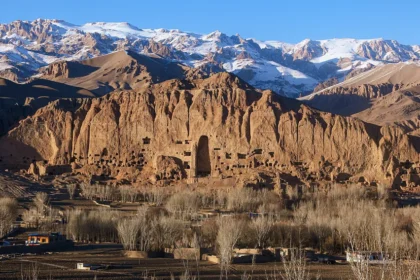RASC News Agency: Kandahar, a city steeped in history and the cradle of great empires, has always played a decisive role in Afghanistan’s political landscape. The Taliban, who claim it as their “center of legitimacy,” have stationed their so-called leader there yet among the city’s native inhabitants, he remains an enigma. Investigations and interviews conducted by RASC News Agency with Kandahar’s elders, tribal leaders, and long-standing residents reveal that Mullah Hibatullah Akhundzada, the Taliban’s supreme leader, was not only not born in this city but has no historical ties to it either. A prominent tribal elder, whose lineage in Kandahar stretches back generations, told RASC: “Kandahar is a city where every tribe, every family, and every notable figure is known. The Taliban’s previous leaders, from Mullah Omar to Mullah Baradar, all had recognizable identities among the people. But this man, Hibatullah, is like a tree that mysteriously sprouted in foreign soil overnight. He was relocated here after the fall of Kabul, and no one truly knows where he came from or which family he belongs to.”
In pursuit of answers as to why the Taliban leader remains so obscure, RASC consulted several informed sources. A long-time resident of Kandahar, who has witnessed the city’s shifting power dynamics over decades, remarked: “In the 1990s, when the Taliban first emerged, people knew that Mullah Mohammad Omar hailed from Maiwand district. Figures like Mullah Baradar and other commanders were also well-known. But no one here remembers Hibatullah from the past. If he were truly from Kandahar, why is there not a single elder, former classmate, or old neighbor who has any recollection of him?” Independent investigations confirm that even within Kandahar’s most established tribal families, no one can trace Hibatullah Akhundzada’s lineage. This lack of historical recognition has fueled skepticism, even among the Taliban ranks, regarding his legitimacy. Analysts argue that Hibatullah is not a leader who naturally ascended within the Taliban’s hierarchy but rather a manufactured figurehead, strategically installed in a carefully orchestrated power play.
An Afghanistani security analyst, speaking anonymously to RASC, stated: “The Taliban’s internal structure is highly complex, with real decision-making concentrated within select inner circles. While Hibatullah is the group’s leader in name, substantial evidence suggests that key decisions are made by the Quetta Shura and affiliated power brokers. His obscurity in Kandahar and lack of grassroots connection to its people reinforce the notion that he is not a self-made leader but a proxy figure, positioned by shadowy forces.” Since reclaiming power, the Taliban have designated Kandahar as their governing stronghold. However, the absence of direct ties between their supreme leader and the city raises critical questions about the true motivations behind their leadership. A civil activist in Kandahar told RASC: “The Taliban’s claim that Kandahar is their stronghold is more a matter of propaganda than social or political reality. The city’s native inhabitants largely view the Taliban as a foreign-imposed force rather than a homegrown movement. Those whose families have lived here for generations do not recognize Hibatullah as one of their own.”
The mystery surrounding the identity and origins of the Taliban’s supreme leader further complicates the power dynamics within the group. While the Taliban strive to anchor their legitimacy in Kandahar, the absence of local recognition for their leader fundamentally undermines their claim. The question remains: Is Hibatullah Akhundzada truly a leader with grassroots support among the Taliban, or merely a symbolic figure, carefully placed to serve hidden interests?






